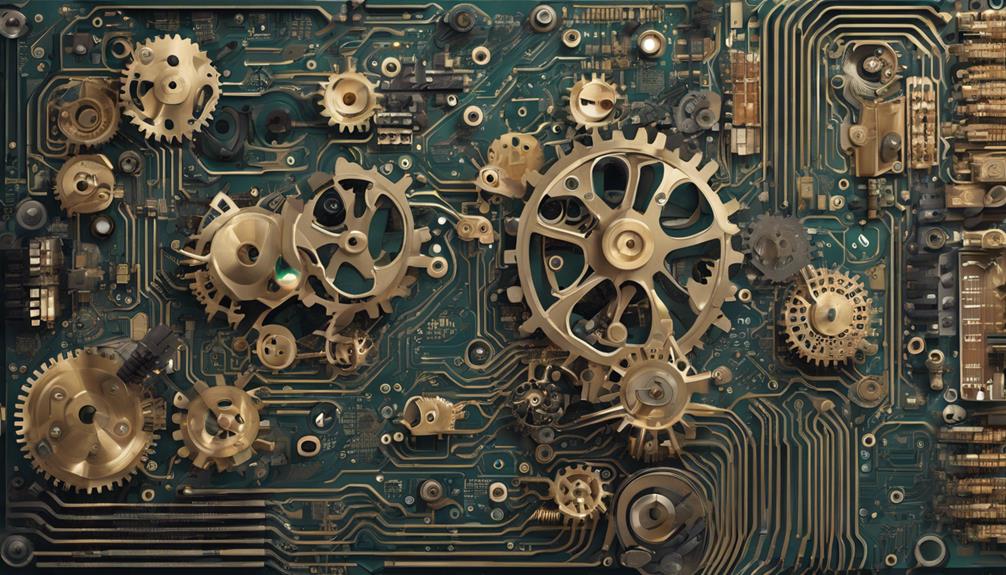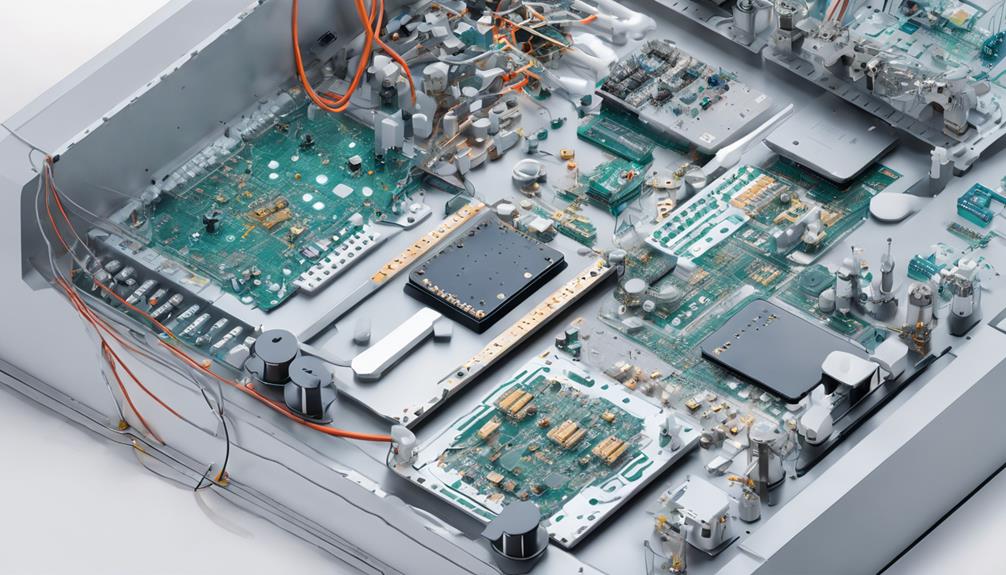To minimize costs in PCB manufacturing, consider five strategic approaches. Simplify board design complexity by reducing layers, minimizing layout complexity, and opting for standard shapes and sizes. Optimize material selection by choosing cost-effective materials, considering material properties, and standardizing sizes. Leverage panelization and array to maximize material usage and streamline assembly. Implement design for manufacturability to simplify assembly and minimize errors. Finally, streamline production with automation to reduce labor costs and improve efficiency. By adopting these strategies, manufacturers can markedly reduce production costs – and there's more to explore on this topic.
Key Takeaways
- Simplify board design complexity to reduce manufacturing costs and streamline assembly.
- Optimize material selection by choosing cost-effective materials and minimizing waste.
- Leverage panelization and array to maximize material usage, reduce waste, and streamline assembly.
- Implement design for manufacturability to simplify assembly, reduce errors, and enhance production efficiency.
- Streamline production with automation to reduce labor costs, increase accuracy, and enhance quality control.
Simplify Board Design Complexity
By paring down the intricacies of the printed circuit board (PCB) design, manufacturers can greatly reduce production costs and material waste, ultimately leading to more cost-effective and efficient manufacturing processes. Simplifying board design complexity is an essential step in achieving cost savings.
To do so, reduce the number of layers in the PCB design to lower manufacturing costs and material usage. Minimize the complexity of the board layout to streamline the assembly process and reduce errors. Opt for standard board shapes and sizes to avoid additional manufacturing expenses. Additionally, simplify component placement and routing to improve manufacturability and cost-effectiveness. Focus on functionality over aesthetics to keep the design simple and cost-efficient.
Optimize Material Selection Efficiency
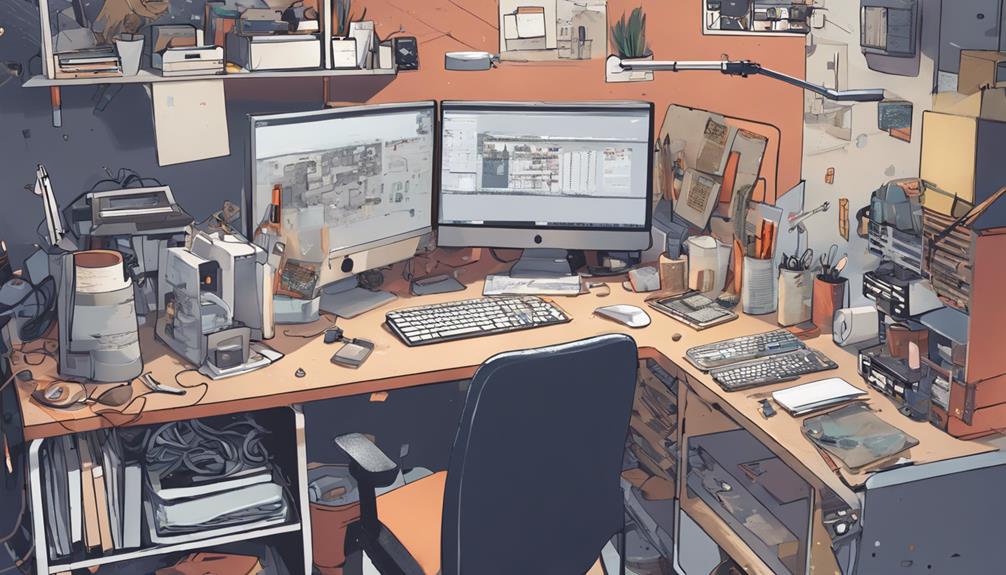
When it comes to optimizing material selection efficiency, selecting the right materials is essential to reducing production costs and guaranteeing the overall quality of the printed circuit board (PCB).
In PCB manufacturing, the choice of materials greatly impacts production expenses. To maximize material selection efficiency, it is important to take into account cost-effective materials like FR4 boards, which are known for their affordability and performance.
Material availability and properties must also be taken into account to ensure the best cost-efficiency. Additionally, opting for standard material sizes can minimize waste and streamline the manufacturing process.
A thorough evaluation of material performance against cost is necessary to strike a balance between quality and affordability. Collaboration with suppliers is also crucial to ensure material selection aligns with project requirements and budget constraints.
Leverage Panelization and Array
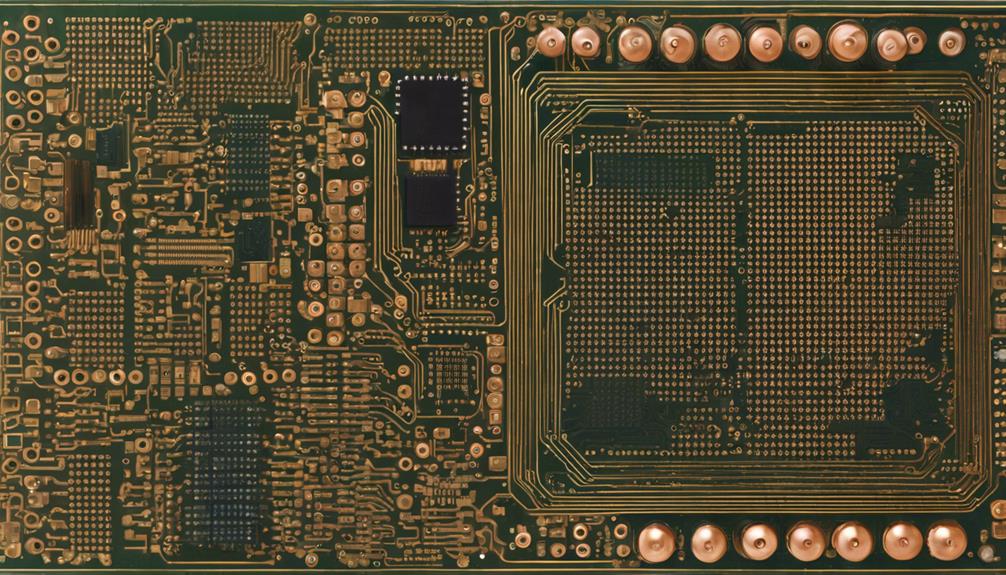
To further optimize production efficiency and reduce costs, manufacturers can leverage panelization and array techniques to maximize material usage and streamline the assembly process. By arranging multiple PCB designs on a single panel, manufacturers can minimize waste and reduce production costs. This approach enables the mass production of multiple PCBs simultaneously, leading to lower overall production costs.
Additionally, panelization allows manufacturers to achieve economies of scale, offering cost-effective solutions to customers. Arraying PCB designs on panels is a common practice in PCB manufacturing, as it increases production output, minimizes waste, and enhances cost efficiency. By consolidating multiple PCB designs on a panel, setup times are minimized, and assembly efficiency is improved.
This approach enables manufacturers to take advantage of economies of scale, reducing production costs and increasing profitability. By leveraging panelization and array techniques, manufacturers can optimize material usage, reduce waste, and streamline the assembly process, ultimately leading to significant cost savings in PCB manufacturing.
Implement Design for Manufacturability
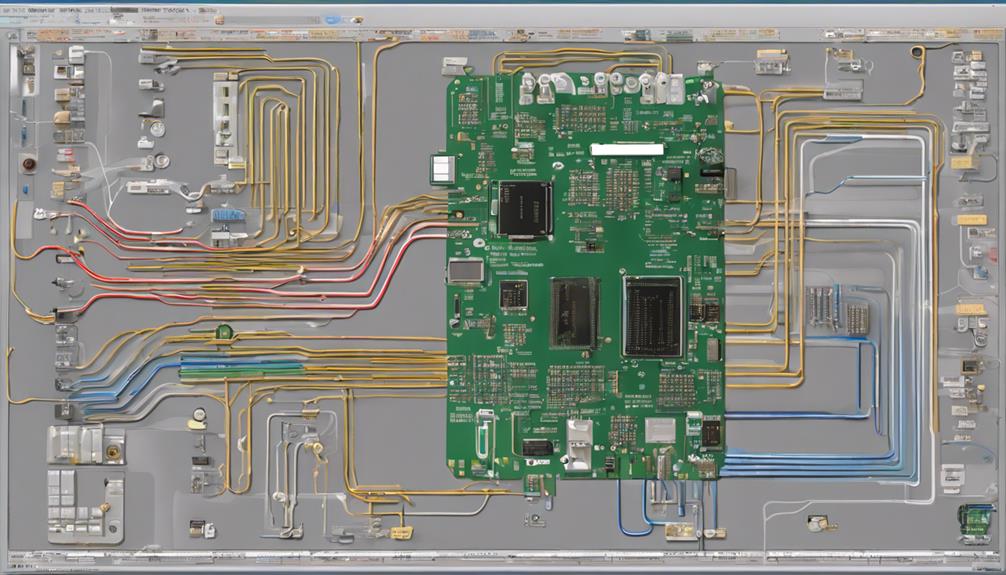
One essential aspect of optimizing PCB manufacturing involves implementing design for manufacturability (DFM), a methodology that focuses on creating PCB designs optimized for efficient and cost-effective manufacturing processes. By incorporating DFM principles early in the design phase, manufacturers can notably reduce production costs and improve product quality.
| DFM Principle | Benefits | Cost Savings |
|---|---|---|
| Simplify Assembly | Reduced production time, fewer errors | 10-15% |
| Optimize Component Placement | Improved manufacturing efficiency, reduced material waste | 8-12% |
| Minimize Design Revisions | Fewer prototypes, reduced engineering time | 12-18% |
| Enhance Production Efficiency | Streamlined manufacturing process, reduced labor costs | 15-20% |
| Conduct DFM Analysis | Identify and address manufacturing issues early | 5-10% |
Streamline Production With Automation

By integrating automation into PCB manufacturing, producers can greatly reduce labor costs, with some experiencing a decrease of up to 50%. This notable cost savings is achieved through the implementation of robotics and machinery that streamline assembly processes, leading to increased efficiency and productivity.
Automation also guarantees higher accuracy and consistency in PCB production, reducing the likelihood of human error and enhancing overall quality control. Automated inspection systems further reinforce quality control, detecting defects and anomalies in real-time, thereby reducing error rates and the need for costly rework.
Additionally, automation decreases production time, allowing manufacturers to meet tight deadlines and respond quickly to changing market demands. By leveraging automation in PCB manufacturing, producers can reap the benefits of improved efficiency, enhanced quality, and substantial cost savings, ultimately gaining a competitive edge in the market.
Frequently Asked Questions
How to Reduce PCB Manufacturing Cost?
To reduce PCB manufacturing costs, it is essential to implement strategic design and production approaches. Optimizing board size and shape minimizes material waste, while standardizing materials and components leverages economies of scale.
Surface mount technology (SMT) accelerates assembly, and panelization maximizes material usage. By prioritizing Design for Manufacturability (DFM), manufacturers can simplify processes, prevent errors, and decrease expenses, ultimately minimizing overall production costs.
What Is the Cheapest PCB Substrate?
In the domain of PCB substrates, an economical champion emerges. The cheapest PCB substrate is FR4, a flame-retardant material that harmoniously balances affordability, electrical properties, and mechanical strength.
Its thermal properties and versatility make it a popular choice for a wide range of applications. By selecting FR4, manufacturers can greatly reduce overall PCB manufacturing costs, making it a cost-effective and sensible decision for production.
What Is the Cheapest Type of Pcb?
The cheapest type of PCB is typically a single-layer board, leveraging standard FR4 material and a lead-containing HASL finish. This configuration minimizes production costs by reducing material usage and simplifying the manufacturing process.
The single-layer design and standard materials selection enable cost-effective production, making it an attractive option for budget-conscious applications.
What Is PCB Costing?
In the domain of printed circuit board (PCB) production, the complexities of costing often remain shrouded in mystery.
PCB costing, fundamentally, is a multifaceted entity, comprising material, labor, overhead, and profit margin. A delicate balance of these components determines the final cost of a PCB.
As designers and manufacturers navigate the intricate landscape of PCB production, a thorough understanding of costing is essential for optimizing design and production processes, ultimately yielding cost-effective solutions.
